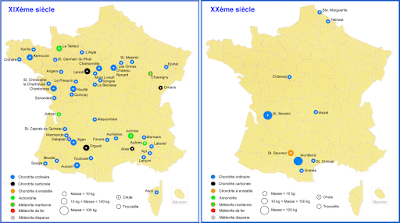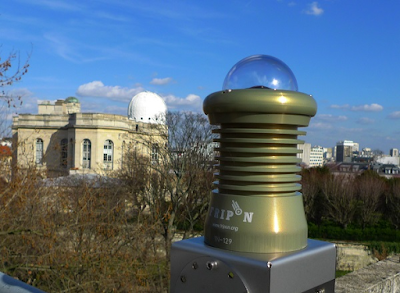Meteorite hunting is launched in France
Meteorite hunting is launched in France
 |
| A bolide observed in Scotland |
Meteorite hunting is launched in France
The Fripon research program for meteorites fallen in France is officially launched today. From 2017, everyone will be able to associate themselves with this great hunting of pebbles from the sky
CONNECTED NETWORK. "This 31st of May we organize the official launch of Fripon, more than two years after the actual start of the experiment," enthuses François Colas of the Institute of Celestial Mechanics and Calculation of Ephemerides (IMCCE). Fripon (Fireball Recovery and Interplanetary Observation Network) is the first connected network of sky surveillance ever made, destined to carry out a large meteorite hunt throughout France for ten years! "The objective is to recover all the meteorites that fall in France," explains François Colas, at the initiative of the project with Brigitte Zanda of the National Museum of Natural History and Sylvain Bouley of the University Paris-Sud. In our territory, there are about 10 to 20 large meteorites per year. We only recover one every ten years, against one every two years in the nineteenth century. At the time, it was often the farmer who saw something falling into his field, picked it up and went to take it to the village teacher
 |
| Comparison of meteorites discovered in France in the twentieth and nineteenth centuries |
Since men are no longer outside looking at the sky, the mission of detection of the cars is entrusted to cameras, equipped with an alert system when an event is located. Thanks to the 550 000 euros allocated to the project by the National Research Agency (ANR), a network of 100 cameras of 360 ° field and 25 radio receivers will be deployed throughout France. Data from weather radars and seismographs will also be used to locate the cars. The first camera was installed at the observatory of the Pic du Midi, at 2877 meters above sea level. "Since then, about sixty cameras have been installed, two thirds of the network, with between three and nine cameras per region, 50 to 100 kilometers away from each other," François Colas explains. Roofs of observatories, universities, museums, associations of scientific culture ..., the places of implantation are multiple and mobilize to date a total of nearly 150 actors. Ultimately, the network should cross our borders
Each camera is connected to a computer. The images are automatically scanned from a specially developed software to spot light events. When a detection occurs, an alert is transmitted in real time to the central computer located at the Paris-Sud university. "From the observation, we can determine the size, mass and speed of the bolide, and reconstruct its orbit and its trajectory in 3D to determine its place of fall, with an accuracy of the order of a few hundred Meters, "notes François Colas
 |
| Camera Fripon installed at the observatory of Paris |
PARTICIPATORY SCIENCE. Therefore, it is possible to organize a campaign of research of the impact on the ground within 24 hours. It remains to find the small pebble in a zone typically about thirty square kilometers of fields, forests, scrub ... On the ground, researchers expect to rely on the good will of amateur meteorite trackers, To the recognition of the stones from heaven. This participatory science program, called the Vigie-Ciel network, is being piloted by the National Museum of Natural History and will be launched in 2017. Researchers will finally be able to track the source regions of meteorites. If a few of us come from Mars, most come from the asteroid belt between Mars and Jupiter. But precisely where? What are the parent bodies, comets or asteroids? What is the origin of rare meteorites? The collected stones, which will be included in the collection of the Museum, will be available to researchers to, for example, paleomagnetism, or the study of the primitive magnetic field in the solar system. "It's a bit of a back-ups. Researchers have been waiting for a sample return mission for the past ten years. Nothing has yet been achieved. There, we will have samples that will fall directly on us, "concludes François Colas
 |
| Principle of operation of Fripon |







